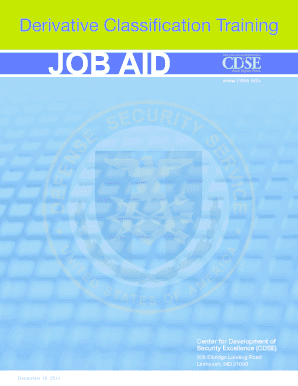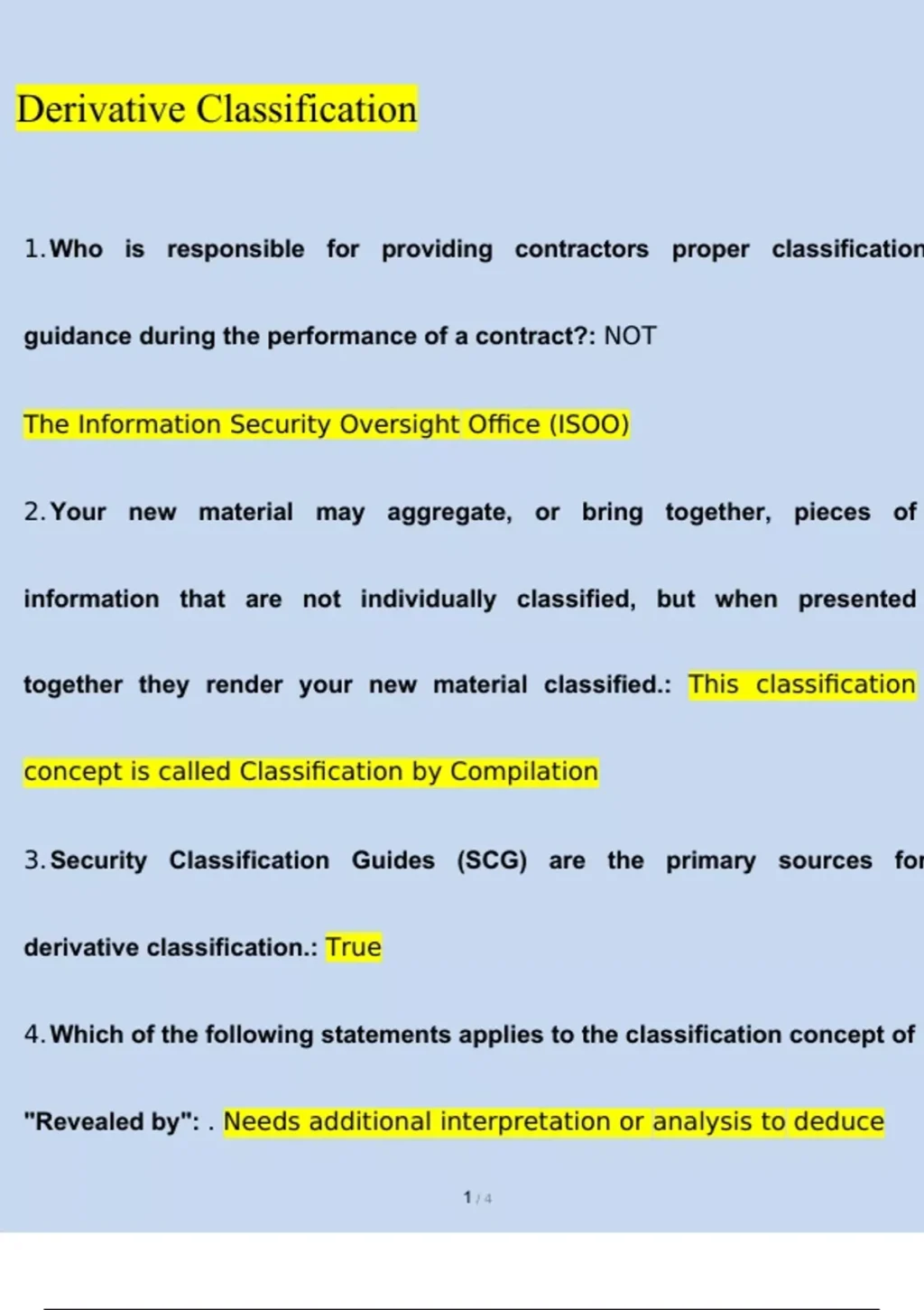In today’s rapidly evolving landscape of national security and information management, the concept of Derivative Classification has become increasingly important. As the U.S. government continues to handle sensitive data, understanding how to properly classify and manage such information is critical for both public and private sector professionals. This article explores the fundamentals of derivative classification, its importance, and how it impacts national security operations.
What is Derivative Classification?
Derivative classification refers to the process of classifying information that is derived from previously classified information. It involves taking existing classified material and determining whether new information, created from or based on that material, should also be classified. This process ensures that sensitive data remains protected while allowing for efficient information sharing where appropriate.
The key principle behind derivative classification is that if the original information is classified, any new information that contains, reveals, or compiles that information may also need to be classified. This approach helps maintain consistency and control over sensitive data across different agencies and departments.
Why is Derivative Classification Important?

Derivative classification plays a crucial role in maintaining the integrity of national security information. Without proper classification practices, there is a risk of unauthorized disclosure, which could compromise military operations, intelligence efforts, and diplomatic relations.
According to the Defense Security Service (DSS), derivative classification is a responsibility shared by all personnel who handle classified information. Whether you’re a military officer, a civilian employee, or a contractor working with the Department of Defense (DOD), understanding your role in this process is essential.
Key Responsibilities of Derivative Classifiers
Derivative classifiers are individuals who are responsible for identifying when new information should be classified based on previously classified material. Their responsibilities include:
- Identifying the sources of classified information
- Determining whether new information needs to be classified
- Applying the correct classification markings
- Ensuring compliance with federal regulations and guidelines
These tasks require a thorough understanding of classification policies, as well as the ability to make informed decisions about what information should remain protected.
Processes and Methods for Derivative Classification
The process of derivative classification typically involves several steps:
- Identify the Source: Determine which classified information is being used as a basis for the new information.
- Analyze the New Information: Assess whether the new information contains, reveals, or compiles classified data.
- Apply Classification: If necessary, assign the appropriate classification level (e.g., Confidential, Secret, Top Secret).
- Mark the Document: Ensure that the new information is clearly marked with the correct classification indicators.
- Maintain Records: Keep track of all classified information and ensure it is stored securely.
These steps help ensure that derivative classification is carried out consistently and accurately.
Authorized Sources for Derivative Classification
Derivative classifiers must rely on authorized sources when making classification decisions. These sources include:
- Previously classified documents
- Official classification guides
- Executive orders and directives
- Federal regulations
By using these authoritative materials, classifiers can ensure that their decisions are legally sound and aligned with current policies.
Limitations and Prohibitions

While derivative classification is an essential tool, it is not without limitations. The U.S. government has established rules to prevent the overclassification of information, which can hinder transparency and information sharing. Some key prohibitions include:
- Classifying information solely for convenience or to avoid accountability
- Classifying information that is already publicly available
- Classifying information that does not meet the criteria for classification
Promoting information sharing while maintaining security is a delicate balance, and derivative classifiers play a vital role in achieving it.
Managing Classification Challenges
Despite best efforts, challenges can arise during the derivative classification process. These may include:
- Unclear or ambiguous sources of classified information
- Conflicting classification levels
- Inadequate training or resources
To address these issues, organizations must implement effective management strategies, including regular training, clear communication, and robust oversight mechanisms.
Conclusion: The Future of Derivative Classification

As the U.S. government continues to navigate complex security environments, the role of derivative classification will only grow in importance. Professionals in the defense, intelligence, and public sectors must stay informed about the latest policies and best practices to ensure that sensitive information is handled appropriately.
Whether you’re a student, a professional, or a member of the public, understanding derivative classification can help you appreciate the broader implications of national security and information management.
Frequently Asked Questions (FAQ)
What is the purpose of derivative classification?
Derivative classification ensures that new information derived from classified sources is properly protected, maintaining the security of national security data.
Who is responsible for derivative classification?
All personnel who handle classified information, including military, civilian, and contractor employees, share responsibility for derivative classification.
What are the risks of improper derivative classification?
Improper classification can lead to unauthorized disclosures, legal consequences, and compromised national security.
How can I learn more about derivative classification?
The Department of Defense offers eLearning courses that provide comprehensive training on derivative classification.
Stay Updated with the Latest News
For more insights into national security, information management, and trending news in the United States, visit our website regularly. Explore the latest developments, expert analyses, and breaking updates that shape the future of American policy and governance.
Author: John D. Miller
Title/Role: National Security Analyst
Credentials: John D. Miller is a seasoned analyst specializing in national security policy, information management, and government operations. With over 15 years of experience in the defense sector, he provides in-depth analysis on topics related to security, classification, and regulatory compliance.
Profile Link: https://www.johndmiller.com
References
- Defense Security Service (DSS)
- National Archives and Records Administration (NARA)
- U.S. Department of Defense (DoD) Classification Guide
Related Articles
- Understanding National Security Classification
- The Role of Information Security in Modern Governance
- Best Practices for Handling Classified Information
URL Slug: us-trending-news-understanding-derivative-classification
Schema Markup:
{
"@context": "https://schema.org",
"@type": "Article",
"headline": "US Trending News: Understanding Derivative Classification",
"description": "Learn about derivative classification, its importance, and how it impacts national security in the United States.",
"author": {
"@type": "Person",
"name": "John D. Miller"
},
"datePublished": "2025-04-05",
"image": "https://example.com/derivative-classification-image.jpg"
}
Featured Snippet Optimization:
Derivative classification is the process of classifying information derived from previously classified material. It ensures that sensitive data remains protected while enabling secure information sharing.
CTA:
Stay updated with the latest news and insights on national security and information management. Explore our articles and resources today!












More Stories
How to Claim Your Joy in League of Legends: A Step-by-Step Guide
What is WSET? A Comprehensive Guide to Wine Education
Why Are People Cancelling Spotify? Key Reasons Behind the Trend